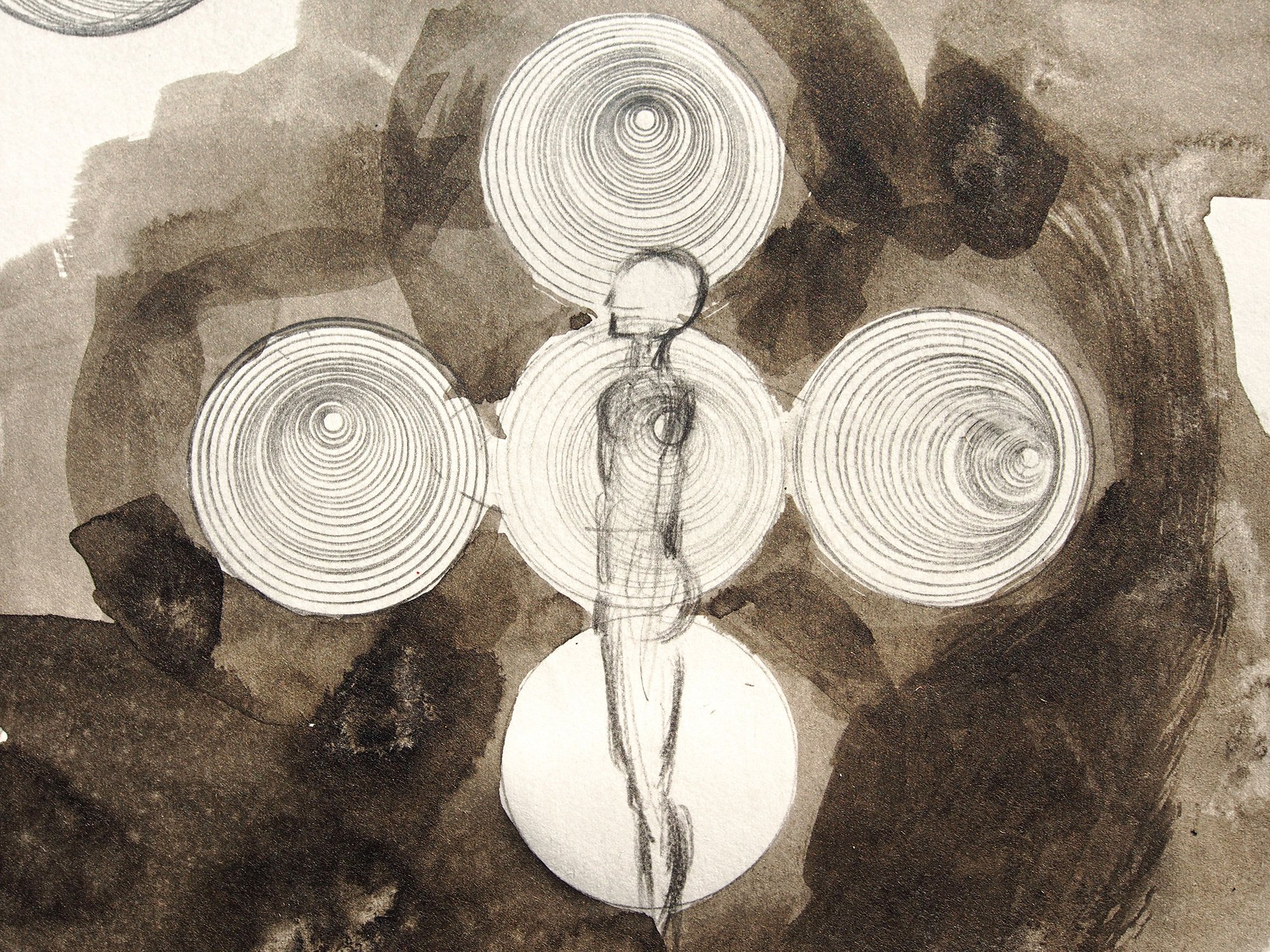
REFERENCES AND GALLERIES
REFERENCES
Featured publications and links.
Seth Riskin. Light Dance: Beyond the Dichotomy of Light and Vision, doctoral thesis, Plymouth University, U.K., 2021.
This practice-based dissertation focuses on Light Dance, an original artistic practice developed by the author that, in reducing light to its core elements in a setting devoid of other sources of illumination, centers the equivalence of light and vision in experience. Moving with projection instruments attached to his body, the artist articulates geometrically elemental light forms on the boundaries of the room. Through unique artistic technologies and methods, Light Dance creates a visual environment in which light is perceived as a reflexive experience of vision, an inversion of our ordinary visual experience. These Light Dance experiences—shaping as they do primary perceptions of space and time through the manipulation of light—speak to the early visual system of the brain, provoking new concepts. In turn, the author shows how this inverted perspective has implications for the epistemic paradigm under which light and vision currently operate, especially as reflected in the relationship between visual art and vision neuroscience.
Seth Riskin. Light Dance, Leonardo, Volume 53, Issue 1, 90-91, February 2020.
The author discusses the origin and meaning of his Light Dance artwork. The simple approach—placing a source of light on the body and thereby manipulating the illumination of the surrounding space through body movements—alters the viewer’s perception of space and time. Architecture appears malleable as the performer affects the size, shape and speed of light forms that reach from the body to the boundaries of the room. Light, in this perceptual environment, is not a mere transmitter of information between the invariant material surroundings and the eye of the viewer; light is a space-defining extension of the performer’s body that transposes movement expression from the individual body to the shared space. An inversion of subjective and objective “spaces” is realized in the experience of Light Dance wherein the prevailing conceptual hierarchy of light and vision is overcome.
Elizabeth Goldring and Ellen Sebring. Centerbook: The Center for Advanced Visual Studies and the Evolution of Art-Science-Technology at MIT, SA+P Press and ZKM Karlsruhe, 2019. Distributed by MIT Press.
In 1967, in a time of student unrest, the Massachusetts Institute of Technology did the unexpected: it established the first academic center for research and collaboration in art, science, and technology. The Center for Advanced Visual Studies (CAVS) brought artists to the MIT campus with radical expressions of a rapidly evolving technological era. Centerbook is the first comprehensive history of MIT's Center for Advanced Visual Studies (CAVS), told through personal accounts and groundbreaking artwork. Foreword by John Durant. Afterword by Gediminas Urbonas.
Click through Centerbook pages featuring work and commentary by Seth Riskin:
Artistic practice penetrates deep into the workings of the brain, manifesting evidence in the form of artworks. However, art is art, not neuroscience. The methods, manner of insights, the motivating principles and the paradigmatic order of knowledge expressed through art need fuller comprehension, articulation and connection with the knowledge of adjacent fields.
My imagery, as evidence, provides a window into the inner realm. (Seth Riskin)
IMAGE GALLERY
Additional images from Seth Riskin’s work (copyright Seth Riskin all rights reserved):
VIDEO GALLERY
Selected video excerpts featured on this site are collected here (copyright Seth Riskin all rights reserved):
Eye Dance
Parallel Bars Light Work
Green Cone Perception Study
György Kepes Memorial performance
Regenbogen Raster
Eye Dance, part 2
Blue Laser Plane
Studio Test
Silo Solos 2021
Red Circles
Mirrored Suit
Robotic Light Ballet








































